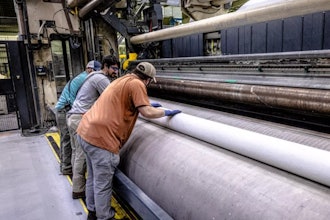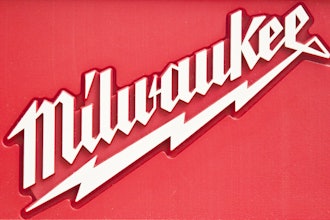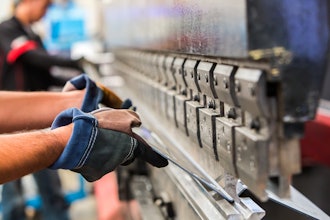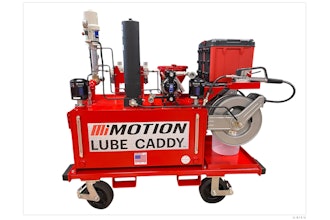Craft breweries interested in protecting their brand in today’s highly competitive market typically consider trademark protection to secure the brewery’s name and logo, as well as the names of flagship brews. While trademarks help protect names and logos, another kind of legal protection, called “trade dress,” allows breweries to protect other aspects of the business used to promote and help consumers identify their brand — such as tap handles, distinct bottle shapes and even the atmosphere of the tasting room. Trade dress, therefore, can be a valuable business asset, and craft breweries relying on unique branding to drive consumer engagement should view trade dress protection as an important component of their intellectual property portfolio.
What is trade dress?
Trade dress offers legal protection for all elements used to promote a good or service, such as product packaging or the design and atmosphere of a business. Trade dress, therefore, has a more nuanced focus than more commonly used trademark protection, which can protect a word, phrase, symbol or design that distinguishes the source of the good or service.
Business elements that are protectable under trade dress law are found everywhere. Companies use unique color schemes, shapes and ornamental designs to create memorable images in the minds of customers. Trade dress, then, is essentially any symbol capable of carrying meaning or identifying the company’s brand.
The enforcement of trade dress protection has taken time to develop, as trade dress was not statutorily recognized until 1988. Trade dress is protected under Section 43(a) of the Lanham Act, 15 U.S.C. § 1125(a), for both registered and unregistered marks. Trade dress is a separate category of trademarks that involves the “total image of a product,” including “features such as size, shape, color, or color combinations, texture, graphics, or even particular sales techniques.” In re Slokevage, 441 F.3d 957, 961 (Fed. Cir. 2006) (citing Two Pesos, Inc. v. Taco Cabana, Inc., 505 U.S. 763, 764 n.1 (1992)). Even though a product’s trade dress is made up of individual features, the “total image” or “overall appearance” of the product or service is protected. Coach Leatherware Co. v. AnnTaylor, Inc., 933 F.2d 162, 168 (2d Cir. 1991).
To qualify as distinctive trade dress, the following elements must be met:
- Secondary meaning: consumers must associate the design with the company through exposure or advertising, distinguishing the source-identifying meaning from the “primary” meaning of the word;
- Functionality: the design must not be functionally necessary for all producers of a similar product; and
- Distinctiveness: the design must have characteristics setting it apart from others.
For example, the distinctive shape of a Coca-Cola bottle is considered very recognizable. Consumers see a bottle of Coke and associate the bottle’s shape with Coke specifically rather than any other soda manufacturer, thus giving rise to secondary meaning. Further, a bottle of Coke performs its job by holding the beverage, but the bottle’s shape or ribbing is not “functionally necessary” for all other beverage producers to accomplish the same task.
Trade dress for breweries — from tap handles and distinctive bottle shapes, to taproom décor
Tap handle design and distinctive bottle shapes. Craft breweries regularly distinguish their products with unique color schemes, shapes and ornamental designs for tap handles and bottles. Memorable, intricate and even outlandish tap designs can help drive consumer engagement, and ultimately, the brewery’s bottom line. Breweries can help safeguard these brand-promoting assets by seeking trade dress protection.
The recent dispute between two Texas breweries over the use of similar beer and tap designs highlights the importance of trade dress for protecting business assets. Alamo Beer Co., LLC v. Old 300 Brewing LLC d/b/a Texian Brewing Co. et. al., 5:14-cv-00285 (W.D. Tex. 2014). Alamo Beer Co. (and no, not the same brand as that in King of the Hill) sold beer depicting a silhouette of the Alamo’s distinctive roof lining on its label. Texian Brewing Co. also used a silhouette of the Alamo on both its label and tap handles. Alamo Beer Co. sued Texian Brewing Co., alleging that Texian’s use of the word “Alamo” and outline and silhouette of the Alamo on its labels and tap handles infringed on Alamo Beer Co.’s trademark and trade dress.
Interestingly enough, Judge Biery (aptly named) entered an order allowing the State of Texas into the suit to protect its interest in the iconic Alamo image. The State of Texas ultimately triumphed over the two breweries, as both agreed in a consent order and final court judgment to no longer use the Lone Star State’s signature Alamo mark for their businesses. Texian was also ordered to either cancel or amend it trademark to remove the roofline design from the mark. Texian ultimately canceled its mark.
It is important to note that third parties, including governmental agencies, may be permitted to intervene in a dispute between competing breweries to protect their own interest in the contested design. This has the unwanted potential to only further complicate trade dress disputes amongst competing breweries.
Trade dress disputes also have the potential to anger craft beer enthusiasts who see a dispute between breweries as a personal attack on the industry. Port Brewing learned this lesson the hard way when it sued Moylan’s Brewing Co. in the U.S. District Court for the Southern District of California for using a similar Gaelic cross on its tap handle. Port Brewing, LLC v. Moylan’s Brewing Company et al., Case No. 3:10-cv-01826 (S.D. Cal. 2010). Port Brewing ultimately dismissed the lawsuit, but only after facing backlash from brew enthusiasts who had no allegiance to either brewery. (See Port’s co-founder Tomme Arthur’s blog post addressing the backlash here). Breweries protecting their trade dress must weigh the potential negative publicity that may arise against the strategic value of protecting their business assets while enforcing their intellectual property rights.
Taproom décor. Protectable taproom trade dress can include elements of a taproom’s design, layout, atmosphere, and even the way brews are presented to patrons (e.g., menu design, themed flights). Because breweries often devote considerable effort to developing a memorable and unique taproom experience that sets them apart from competitors, trade dress protection for unique elements of the taproom can be very valuable.
For a taproom to acquire secondary meaning, the décor must be distinctive in the eyes of the public. Miller’s Ale House, Inc. v. Boynton Carolina Ale House, LLC, 745 F. Supp. 2d 1359, 1375 (S.D. Fla. 2010). In Miller, the brewery failed to demonstrate that patrons “associate[d] the interior appearance and décor of Miller’s restaurants specifically with Miller’s “ALE HOUSE” brand.” Id. at 1376. In other words, a brewery’s décor must be so distinct that one could not confuse the interior with that of another brewery (no matter how many IPAs were served that night).
Trade dress protection can be a valuable business asset. Craft breweries relying on their branding to stand out amongst a highly competitive market should view trade dress protection as an important component of their intellectual property portfolio. Along with other forms of intellectual property, trade dress can help craft breweries protect elements of their brand that help drive consumer engagement, and ultimately, the bottom line.
Bryan Mechell is a principal in the Intellectual Property and Technology group of Robins Kaplan LLP and has experience advising a variety of clients in intellectual property disputes. Bryan is registered to practice before the United States Patent and Trademark Office and can be reached at [email protected] or 612-349-0172.
Austin Miller is an associate in the Intellectual Property and Technology group of Robins Kaplan LLP and represents clients in patent disputes involving telecommunications, software, and health and life sciences. Austin can be reached at [email protected] or 612-349-0921.























